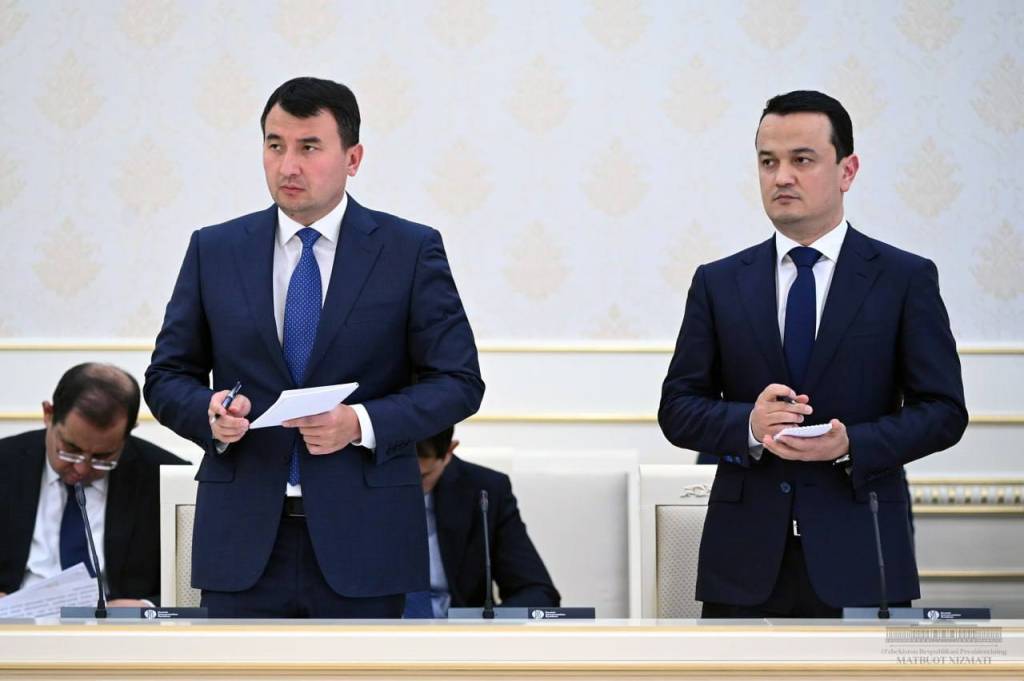On January 10, President Shavkat Mirziyoyev chaired a videoconference on the development of industry and the identification of additional reserves.
Industry plays a very important role in the economy and employment. In recent years, 19 free economic zones and more than 400 small industrial zones have been created, 10 trillion UZS have been allocated for their infrastructure to create the necessary conditions for industries. $3 billion were directed to turn into “drivers” such industries as textiles, chemistry, building materials, leather, pharmaceutical, electrical industries. To provide the industry with raw materials, exploration work has been tripled, more than 600 new deposits have been discovered.

As a result, over the past five years, the number of industrial enterprises has doubled to 100 thousand, and the volume of production has increased by 1.4 times.
This has a positive effect on the development of regions. In particular, such new industries as building materials, automotive industry, food industry have appeared in Jizzakh. 220 construction materials projects have been launched, the share of this industry in the industry of the region has exceeded 20 percent.
19 major metalworking projects have been implemented in Samarkand, Syrdarya, Namangan and other regions. Products worth 3 trillion UZS were produced in 2022 in 54 new small industrial zones created in Namangan.

Over the past three years, the volume of production in the chemical industry has increased 1.5 times, and exports – 2 times.
However, in some regions the results do not match the possibilities. In particular, industrial growth in Navoi, Bukhara and Tashkent regions in 2022 was below expectations. In the Republic of Karakalpakstan, Jizzakh, Kashkadarya, Surkhandarya, Fergana and Khorezm regions, the level of yarn processing remains low. In Namangan, Samarkand and Navoi, the potential for the production of food, leather and footwear products and furniture is underused.
In this regard, the meeting participants discussed measures to develop the industry, increase investment in the industry and use reserves.

The Head of state stressed that the industry will be provided with new opportunities and additional financial resources.
First of all, banking standards will be revised and additional resources will be allocated to commercial banks for 55 trillion UZS for lending to enterprises. This means an additional source of investment for an average of $20 million per district.
The second possibility is that in 2023, 1.7 trillion UZS will be allocated for the infrastructure of industrial zones and large investment projects. The territory of the free economic zones “Gijduvon” and “Kokand” will also be expanded. Branches of “Urgut” free economic zone will be created in Karakalpakstan and Kashadarya.

Third, starting in 2023, 60 districts of the fourth and fifth categories, whose economic development is lagging, will be provided with 27 types of tax incentives, subsidies and preferences.
Fourth, preferences for manufacturers of carpets, home textiles, leather and jewelry. So, in 2023, an additional $300 million will be allocated for textile projects. Customs privileges for more than 200 types of imported raw materials for the leather and footwear industry will be extended for three years. Jewelers will have the opportunity to purchase raw materials at a discount, as well as tax, customs and banking benefits.
The President emphasized the need for widely informing the population and entrepreneurs about these opportunities and increasing the number of projects at places.

It was noted that 1,264 projects will be launched in the industrial zones. An important task was to ensure the launch of the 6th hydrometallurgical plant in Navoi region and the 3rd copper processing plant in Olmaliq, a modern foundry in Andijan region and an agricultural machinery cluster in Chirchik.
Responsible officials were tasked with expanding industrial cooperation, implementing localization projects worth $6 billion, and timely launching about 3,000 projects included in regional investment programs.

In general, it was noted that this year, using all the reserves, it is possible to increase industrial production by 14 percent.
Heads of industries and hokims presented their plans and proposals on the issues discussed at the meeting.







